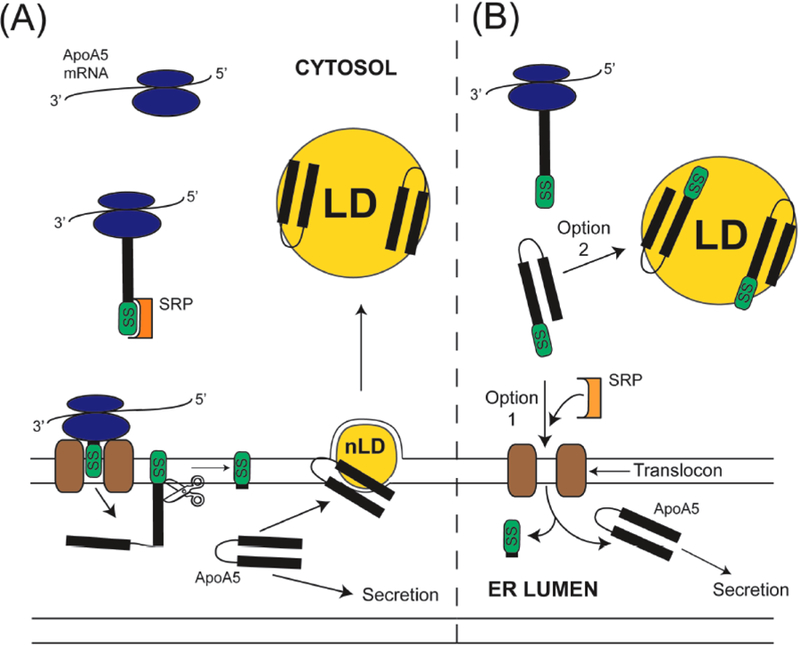Fig. (1). Alternate pathways for production and trafficking of nascent apoA5.

In pathway (A) the ribosomal translation machinery generates a nascent apoA-V signal sequence (SS) that binds to the Signal Recognition Particle (SRP) with subsequent docking to the SRP receptor (not shown) with continued translation through the translocon and into the endoplasmic reticulum (ER) lumen. Translated preprotein in the ER lumen is a substrate for signal peptidase (depicted as scissors), which cleaves the signal sequence, releasing mature apoA5. In Pathway A, mature apoA5 either associates with membrane defects at the site of nascent lipid droplet (nLD) assembly or transits the ER for secretion from the cell. In pathway (B) apoA5 translation is completed within the cytoplasm. Once formed, the apoA5 preprotein may undergo post-translational translocation to the ER for secretion from the cell (option 1) or it may escape this fate by interaction, and stable binding to, cytosolic LD (option 2).
